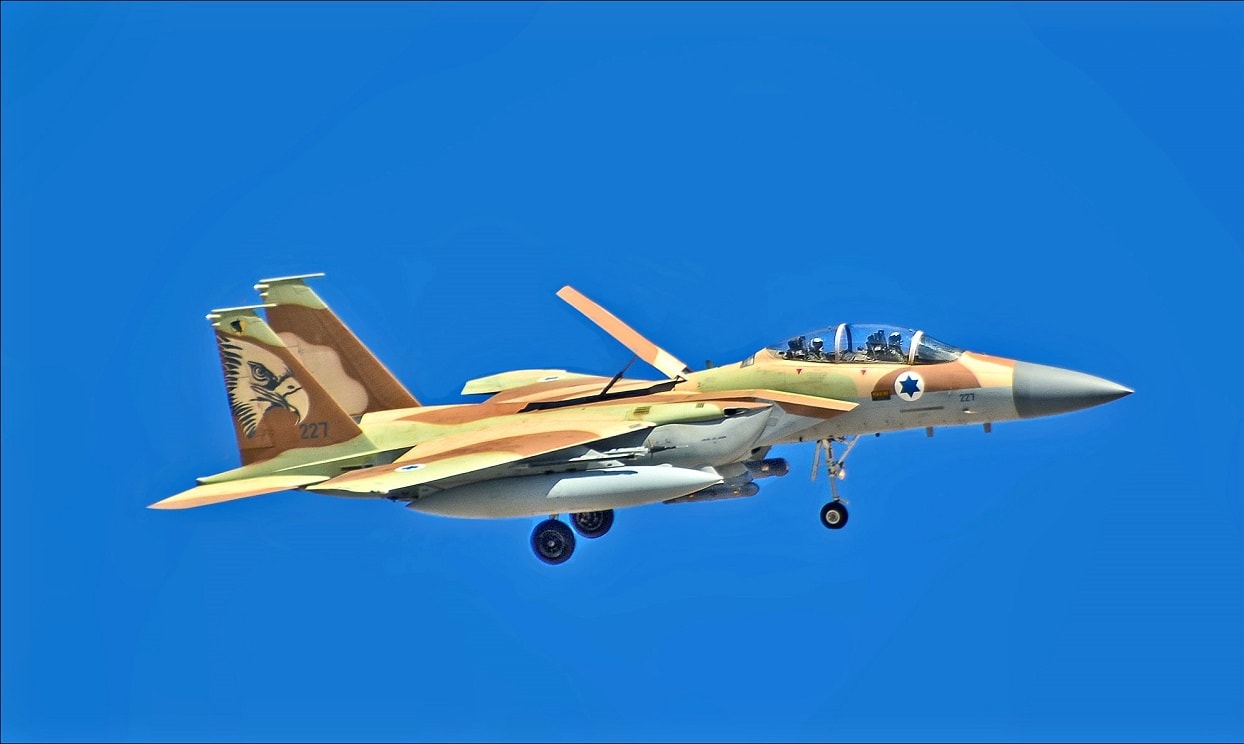In January, Israel’s Ministry of Defense formally requested 25 F-15EX fighters from the U.S. after years of delay. According to several defense outlets, the Israeli government sent an official Letter of Request (LOR) to the U.S., which is the initial step in the Foreign Military Sale process.
As Breaking Defense points out, Israel’s ongoing political instability, which has culminated in five general elections in under four years certainly delayed its progress in purchasing the new fighter platform.
While the earliest deliveries of the F-15EX jet are not planned until 2028, the Israeli government is expected to request the order be expedited.
Israel is also requesting the upgrade of its existing fleet of 25 F-15I Ra’am – the country’s specialized variant of the American F-15E Strike Eagle, to emulate the new F-15EX prototype.
Why the F-15I platform is essential to the IAF (Israeli Air Force)
As tensions between Israel and its top nemesis, Iran, have escalated in recent years, the IAF has prioritized its need to acquire more F-15 airframes equipped with the capability to haul heavier loads to destroy reinforced targets. According to Boeing, the new F-15EX fighter “carries more weapons than any other fighter in its class and can launch hypersonic weapons up to 22 feet long and weigh up to 7,000 pounds.”
This new technology will be critical for the IAF since its pilots need the air power and quantity of jets to both take-out Iran’s advancing air defense systems and nuclear facilities simultaneously. Additionally, the IAF uses its F-15 fleets to take out thousands of rockets operated by the Iranian-backed terror group Hezbollah in Lebanon.
What makes the F-15I Ra’am variant stand out
The F-15 is 50 years old but the aging platform remains an absolute powerhouse for every air force that flies it. Incredibly, this airframe possesses a 104 to 0 kill ratio. The airframe’s advanced electronic warfare system, high engine thrust-to-weight ratio, and large weapons payload elevate its effectiveness.
Israel’s version of the F-15E Strike Eagle, the F-15I Ra’am “Thunder,” entered service with the IAF in the late 1990s.
Israel’s Aerospace Industries collaborated with the platform’s manufacturer, Boeing, to install specialized additions to the F-15I. The Thunder’s larger frame is perhaps the most significant modification Israel requested. Its ability to carry greater quantities of weapons gives the F-15 a capability that sleeker airframes like the F-35 do not possess. In addition to size, the Thunder platform features several domestic-designed capabilities- including an Israeli-made central computer and an Elbit display and sight helmet.
The F-15I Ra’am has led the IAF for years
Frequently used by the IAF in conflicts along Israel’s borders and abroad, the F-15I plays a critical role in the IAF’s mission set. The platform has a star-studded track record for its use in training exercises and counter-terrorism operations in the region, including the Gaza War, the 2006 Lebanese War, and Operation Pillar of Defense. As Iran has ramped up its efforts on the nuclear front, the IAF has incorporated the F-15I and its abilities into strike plans.
Since Iran has provided Russia with many of the killer-drones it continues to use in its invasion of Ukraine, Israel is wary that the Kremlin may return the favor by selling the regime its S-400 air defense system. If the rogue state does acquire this more advanced system, the IAF will undoubtedly need a fleet of upgraded Ra’ams and advanced F-15EX fighters to carry out successful strike missions in Iran.
MORE: World War III – Where Could It Start?
MORE: A U.S.-China War Over Taiwan Would Be Bloody
Maya Carlin is a Middle East Defense Editor with 19FortyFive. She is also an analyst with the Center for Security Policy and a former Anna Sobol Levy Fellow at IDC Herzliya in Israel. She has by-lines in many publications, including The National Interest, Jerusalem Post, and Times of Israel.

